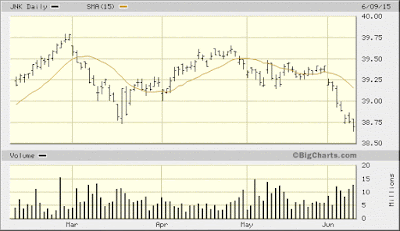June
was a very propitious month for trading recommendations in the Momentum Strategies Report. The following graph shows the performance of
our exchange-traded fund recommendation for June. While we carried only one position this month
– a computer services ETF – it outperformed the S&P 500 and gave us a
worthwhile gain at a time when many investors were down for the month.
The
key to this outperformance was our focus on relative strength and forward
momentum – the two most critical factors to profiting in a secular bull
market. As long as the intermediate- and
longer-term market trends are up, investors would do well to remember that
relative strength is one of the most important things to look for in a
potential trade set up.
Our
technical indicators also allowed us to deftly sidestep the sharp decline which
hit the broad market late in the month.
This again underscores the value in strictly adhering to a reliable
trading discipline. Technical analysis,
when properly utilized, always trumps fundamental analysis. A skilled practitioner who can combine both
disciplines, however, will greatly augment his investment returns.
[For more info on MSR, visit the following link: http://www.clifdroke.com/subscribe_msr.mgi]
[For more info on MSR, visit the following link: http://www.clifdroke.com/subscribe_msr.mgi]




